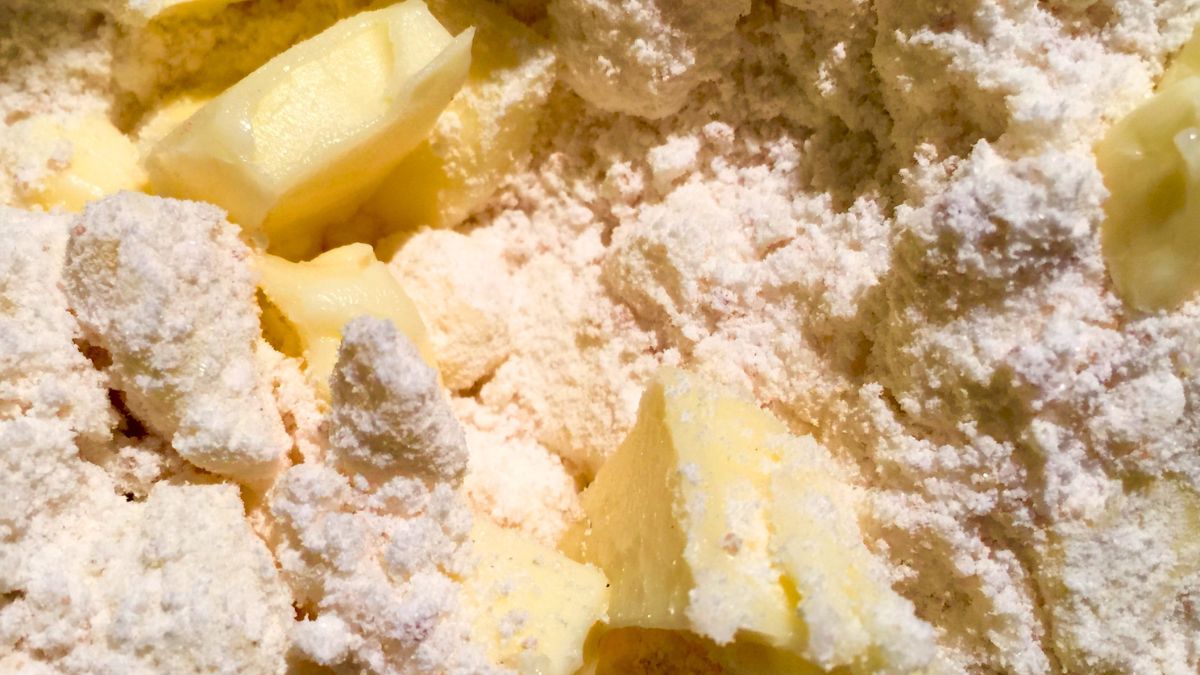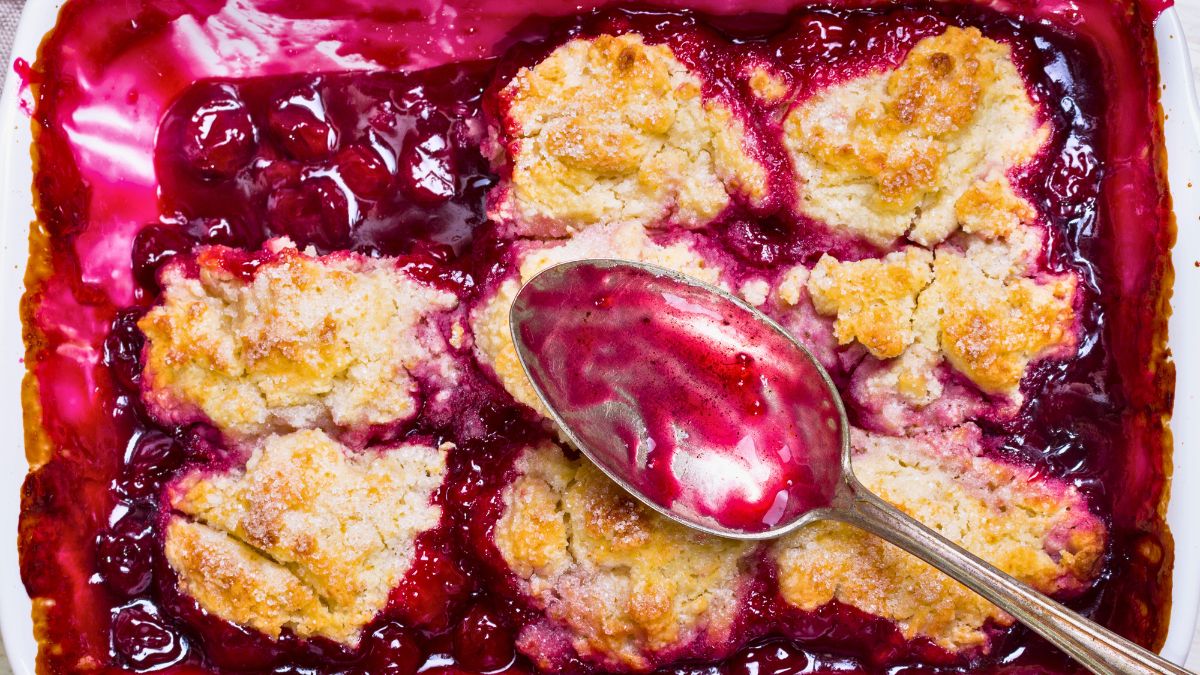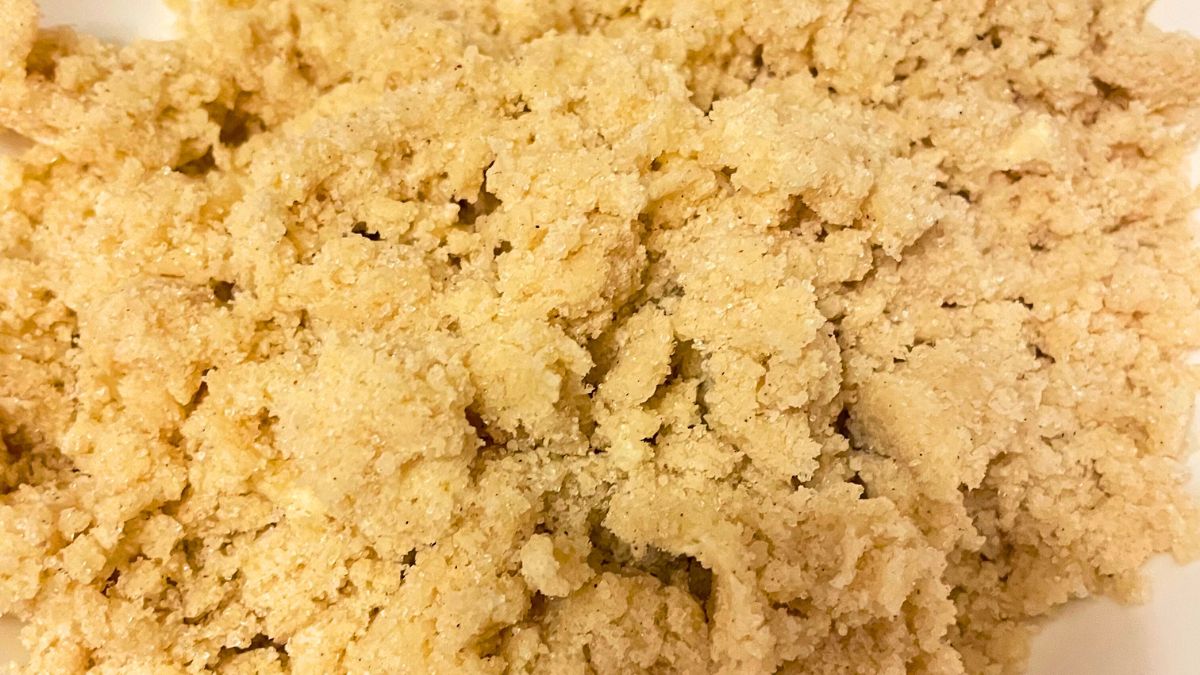9 Fixes for Too Much Butter in Cobbler

Cobbler is one of my favorite summer desserts, both for its easy and simple making and for its versatility. Still, if you are an inexperienced baker, you may need help getting the ingredients right and the consistency just perfect. The eyes get greedy when adding butter, so we often think more means better, which isn’t a good idea, but worry not, as I am here to help you fix the situation. Here’s how you can fix too much butter in a cobbler:
Reducing serving sizes, serving with ice cream, adding lemon zest, doubling the batch, adding more fruit, adding baking spices, and baking in a larger pan are excellent fixers when you add too much butter to a cobbler.
The too much butter problem is a chronic issue of mine since I am a huge butter fan, and no amount seems enough for me. I often disregard the recipe and do things my way, which has resulted in more challenging situations than I’d like to admit. But, it wasn’t all for nothing, as I gained invaluable experience, and I am eager to share it in this article, so I’ll tell you all about fixing cobbler with too much butter!
What Happens if You Put Too Much Butter in Cobbler?
One of the few visible signs that your cobbler contains too much butter is its greasy and glossy appearance. The butter adds fats which emerge on the surface before you bake the cobbler. It will be slippery and more difficult to handle. It sounds easy to notice this signal, but it can easily trick you into thinking that your cobbler is perfect since it will appear much more appetizing.
Don’t let the pleasant appearance fool you; if your cobbler seems too good to be true, it probably contains excess butter.
Another visible signal is the soggy bottom, but you won’t notice this before you bake it. Before baking, a cobbler is soft and soggy, which repairs on its own after you pop it in the oven. If you add too much butter, the cobbler’s sogginess won’t disappear upon baking, and you’ll end up with a gooey dessert.
For me, a soggy cobbler isn’t a problem, and I enjoy it just as much, but some don’t like it like this, which could genuinely disappoint them. Also, the bottom will not only be soggy but will also feel fatty since the butter fats tend to sink and concentrate around the lowest point.
A cobbler with too much butter will always exhibit flavor imbalance, which means it will have a domineering buttery note. Depending on the rest of the cobbler ingredients, i.e., the filling, this imbalance can be more or less noticeable, but it will be present.
For example, I don’t mind the butteriness in an apple cobbler, but I don’t enjoy it at all in a peach cobbler.
If you notice that you feel full and heavy in your stomach, yet you’ve eaten a small piece of cobbler, it is probably because you added too much butter. A cobbler with excess butter is significantly more satiating and more calorie-rich. [1]
In addition to the flavor imbalance, you will also notice an overbearing richness in the cobbler. Yes, it’s the butter or the excess butter. It may sound like there’s no such thing as a too-rich cobbler, but believe me, there is.
Uneven baking is another symptom of too much butter in your cobbler. Since there’s too much butter fat, it is likely that it won’t be evenly distributed through the dough, concentrating more in some and less in other parts.
So, your cobbler will be well-baked in some spots, overbaked in others, and probably underbaked in different ones.
Adding too much butter to cobbler always comes with warning signs, but that doesn’t mean that they will always be visible. Since the cobbler is supposed to be soft, crumbly, and moist, its consistency often doesn’t seem too different than what it is supposed to be, even though it contains too much butter. It is more challenging to see the signs before baking than after, but that doesn’t mean you won’t notice them immediately.
Thankfully, you can mask your mistakes in serving — scroll down for the how-tos!
How to Fix Too Buttery Cobbler?
Fixing a cobbler with too much butter doesn’t mean reversing the situation entirely, but it does mean that you can still have a great cobbler, although you haven’t done everything perfectly. Check out the fixers that do the trick for me!
Add More Flour
If you have extra flour, don’t be afraid to use it. The flour will likely absorb the butter, restoring the balance in your cobbler to some extent. Still, this method works best as a quick reaction rather than a delayed solution.
You must move fast and add the extra flour before the butter fats get absorbed into the dough. If you’re too late, the extra flour method will be less effective, if at all.
Add More Fruit

When it comes to fixing cobbler with too much butter, adding more fruit is one of the simplest methods you can try before baking. Still, this fixer doesn’t come without any risks because whether or not you can add more fruit depends on the fruit itself.
If your fruit filling contains more juice or is naturally softer, adding more of it to fix an already soggy cobbler might not be the best idea. So, if you are working with drier fruits, such as apples, you can increase the amount of fruit in your cobbler, but if your fruit filling entails softer fruits, I suggest you skip this suggestion.
Double the Batch
Doubling the batch has always been the most effective solution for me, so I always keep an extra set of cobbler ingredients just in case. This method may be the most expensive one since you will have to buy double of everything, but it is the one that eliminates the excess butter problem to the highest degree, if not entirely.
When you double the batch, you add more of everything, restoring the balance of the ingredients. This method works even if you are an absolute beginner, so if you are a cobbler newbie, I recommend this fixer for you.
Use a Bigger Baking Dish
By using a larger baking dish as a fixer, you give your cobbler the best chance of survival without changing its structure. The more densely it bakes, the more the butter fats will deposit onto the bottom, giving you a soggy cobbler.
On the other hand, when you bake it in a larger baking dish, the cobbler will be thinner, allowing for the heat to penetrate more evenly and thoroughly. I apply this method when I can’t use the other ones due to picky guests, and it has always resulted in success.
Adjust Baking
Since excess butter in cobbler inevitably results in uneven baking, you need to make adjustments in the baking time and temperature to salvage your dessert as much as possible. I decrease the baking temperature and prolong the baking time, which often does the trick.
It might help to rotate the cobbler once or twice while baking to ensure that it bakes evenly.
Add Lemon Zest
This fixer affects the flavor but not the texture and consistency of the cobbler, which is good enough for me. The lemon zest will do absolutely nothing to fix the cobbler’s texture, but thanks to its acidity, it can restore or, at least, improve the flavor balance in your dessert.
Don’t be afraid to use more lemon zest and add a generous amount. The more buttery the cobbler, the more lemon zest you should add.
Add Baking Spices
Baking spices such as cinnamon, nutmeg, or vanilla are excellent flavor-balancing fixers. Like the lemon zest, these don’t do anything for the structural problem excess butter can cause, but they do improve the flavor.
Instead of an overwhelming butteriness, you’ll get a delightful spicy note, sufficiently mellow to stay in the background but strong enough to balance the flavors. I usually go with more cinnamon and just a pinch of nutmeg, but feel free to find your own magic spice ratio.
Serve With Ice Cream

Serving your excess butter cobbler with a dollop of ice cream on top is an excellent and simple solution for the too-much-butter problem. The temperature contrast alone will have a massive flavor impact. The creaminess of the ice cream as it melts will mask the sogginess of the cobbler, creating an overall creamy consistency.
Reduce Serving Size
If you can’t do anything to fix your cobbler, or nothing you did worked, don’t worry; I have one last trick to share with you. Reduce the serving size in these situations and serve your cobbler in smaller portions. It will still be delicious, and the smaller, denser cobbler pieces will hold their shape better.
You can also serve your cobbler in tacos like in this recipe!
Can You Still Bake the Cobbler with Too Much Butter?
Yes, you can still bake the cobbler with too much butter. You’ll need to make some changes, such as adding extra ingredients and adjusting the baking time and temperature. Still, you will get a delicious cobbler, nevertheless!
What Should a Perfect Cobbler Dough Look Like?

A perfect cobbler dough is soft but not soggy and easy to work with. The texture is smooth, and the color is even, without any dark spots or discolorations. It should be light and uniform, without any lumps or grains.
What do you do to fix your cobbler dough with too much butter? Excited to hear your tips and tricks in the comments below!
